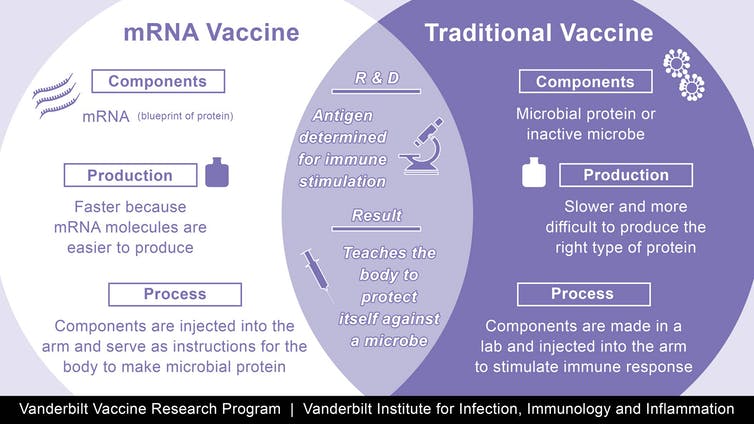Following approval by the EU, vaccination against the coronavirus has also begun inAustria. The vaccine from Biontech/Pfizer uses a new process: It is an mRNA vaccine. But what is this RNA anyway?
The first vaccines against coronavirus have received regulatory approval. The vaccine from Biontech-Pfizer is already being administered in many countries, and the EU has also recently approved it. In Moderna’s vaccine, the next one is already in the starting blocks. Both are mRNA vaccines. But why are they exactly?
RNA: messenger of information
RNA transmits information in human cells. The mRNA vaccines stimulate the formation of a corona-characteristic protein in the cells, against which the body forms antibodies.
“The RNA transfers this information to the rest of the cell, providing the template, so to speak, for the production of proteins,” explains Prof. Dr. Christoph Engel, a structural biologist at the University of Regensburg. “These proteins can then fill functions in the cell, such as energy metabolism.”
Our DNA lies inert in the cell nucleus and does nothing but store our building instructions, particularly stable and protected in the form of a double strand, the double helix. A complicated long molecule, it looks a bit like a zipper. RNA – these are copies of individual sections of DNA, they are produced as if on an assembly line. They carry the information on how to control biological processes from the cell nucleus into the cell. Visually, however, RNA forms only a single strand, i.e. only one side of the zipper.
How does mRNA vaccine work?
Vaccines train the immune system to recognize the disease-causing part of a virus. Vaccines traditionally contain either weakened viruses or purified signature proteins of the virus.
But an mRNA vaccine is different, because rather than having the viral protein injected, a person receives genetic material – mRNA – that encodes the viral protein. When these genetic instructions are injected into the upper arm, the muscle cells translate them to make the viral protein directly in the body.
This approach mimics what the SARS-CoV-2 does in nature – but the vaccine mRNA codes only for the critical fragment of the viral protein. This gives the immune system a preview of what the real virus looks like without causing disease. This preview gives the immune system time to design powerful antibodies that can neutralize the real virus if the individual is ever infected.
While this synthetic mRNA is genetic material, it cannot be transmitted to the next generation. After an mRNA injection, this molecule guides the protein production inside the muscle cells, which reaches peak levels for 24 to 48 hours and can last for a few more days.

What are problems with mRNA?
MRNA technology isn’t new. It was shown a while back that when synthetic mRNA is injected into an animal, the cells can produce a desired protein. But the progress remained slow. That’s because mRNA is not only notoriously unstable and easy to degrade into smaller components, it is also easily destroyed by the human body’s immune defenses, which make delivering it to the target very inefficient.
But beginning in 2005, researchers figured out how to stabilize mRNA and package it into small particles to deliver it as a vaccine. The mRNA COVID-19 vaccines are expected to be the first using this technology to be approved by the FDA.
After a decade of work, the mRNA vaccines are now ready for evaluation. Physicians will be watching for unintended immune reactions, which can be both helpful and detrimental.
Why keep mRNA supercold?
The most important challenge for development of a mRNA vaccine remains its inherent instability, because it is more likely to break apart above freezing temperatures.
Modification of the mRNA building blocks and development of the particles that can cocoon it relatively safely have helped the mRNA vaccine candidates. But this new class of vaccine still requires unprecedented freezer conditions for distribution and administration.
Source: br.de/theconversation.com/picture:
This post has already been read 1419 times!



